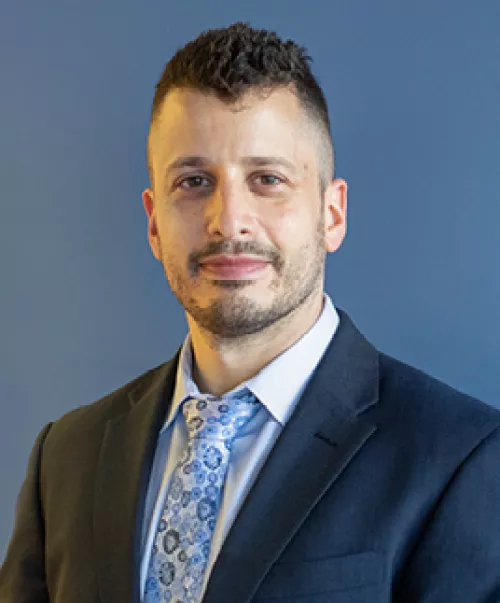Ezequiel ‘Eze’ Goldschmidt, MD, PhD, has joined the UCSF Department of Neurological Surgery and the UCSF Brain Tumor Center, bringing an expertise in complex and minimally invasive skull base surgery. Dr. Goldschmidt completed neurosurgical residency training and a skull base surgery fellowship at the University of Pittsburgh Medical Center, followed by a prestigious postdoctoral fellowship at the Karolinska Institute in Stockholm, Sweden.
A native of Argentina, Dr. Goldschmidt earned his MD and PhD degrees from Buenos Aries University School of Medicine and completed neurosurgical residency there in addition to the residency program at the University of Pittsburgh.
Here he discusses a passion for anatomy, how minimally invasive approaches continue to shape the skull base field, and a future where tiny robots are piloted up the nose.
Skull Base as a Specialty
I have always loved brain and cranial anatomy. The main concept behind skull base surgery is that you need to know the land, so you know how to avoid delicate structures. There is a lot of strategy – you are dealing with delicate arteries and nerves that are all surrounded by bone – and the goal is always to minimize risk of injury that could come from accessing a lesion. I love being able to apply all of my training in anatomy to these very complicated operations that lead to safe and complete resections of tumors. I find that challenging and it’s been the passion of my life.
The 360-degree View
I think the way the field is moving; we have more options and can tailor our approach to the specific needs and wishes of our patients. For instance, a slow-growing tumor that is compressing the optic nerve and causing vision loss could be removed with a small craniotomy (an operation where we open the skull to remove the tumor). But many times, I can also do that operation endoscopically through the nose. What I like about my skill set is that I can offer both and we can discuss what is a priority for you and what might be a consequence of one or the other approach and make a decision together. That is the benefit of having 360 degrees of options for one lesion. There is no conflict of interest, I am able to just do what is best for the patient.
The Movement to Minimally Invasive
We are moving into a more minimally invasive era in general. Even cranial approaches are going to be smaller and smaller, with shorter admission times, less impact on the patient in general, and faster recovery. I was lucky enough to train with the people who developed the field of minimally invasive skull base surgery, and in my practice I can operate on all of the ventral skull base through an endonasal approach. My goal is to get the stress of the experience as low as possible, avoid complications, and really take care of the needs of the patient.
Sometimes taking care of the patient means not operating. A tumor may be causing symptoms – facial numbness, for example – but if those symptoms are not really bothering the patient and they are at higher risk for an operation due to age or co-morbidities, surgery may not be the right choice. However, if the same tumor in the same patient is causing sharp pain, that is a different scenario. We have a lot of options now, but there is always a risk with a surgical procedure, and we have to understand what the patient actually needs to stay healthy or regain or preserve function.
Firepower to Create the Future
As a postdoctoral fellow at the Karolinska Institute, my research projects focused on a novel mechanisms of brain neuroplasticity [establishing synaptic connections between the left and right brain hemispheres in mice] and on developmental skull base biology. We are now bringing the next phase of the skull base research to UCSF in a collaboration with David Raleigh [MD, PhD, associate professor of radiation oncology] that uses single-cell sequencing to explore whether different developmental types match with different tumor types.
In the anatomy lab, I think there are also opportunities for developing untethered robotic surgery applications in endonasal and skull base surgery. By guiding tiny robots up through the nasal cavity, we have the potential to look around corners with these devices, which is still a major problem in neurosurgery, and that’s something I plan to explore in the Department’s skull base anatomy lab.
Usually when you come up with something new, the first thing you are reflexively told is that it’s not a good idea. For me that’s usually a sign to continue exploring it. The thing is that you need the firepower and support to move it forward, and we have that here at UCSF. My research goals are to take a modern look at skull base anatomy and try to use technology to better understand what we do, which will lead to safer operations and better education for the trainees.
The Best Part of Being at UCSF
UCSF combines clinical excellence and a rich neurosurgical tradition with modern technology and the best minds in the field. It’s an environment for making new things happen, so I’m very excited to be here.

